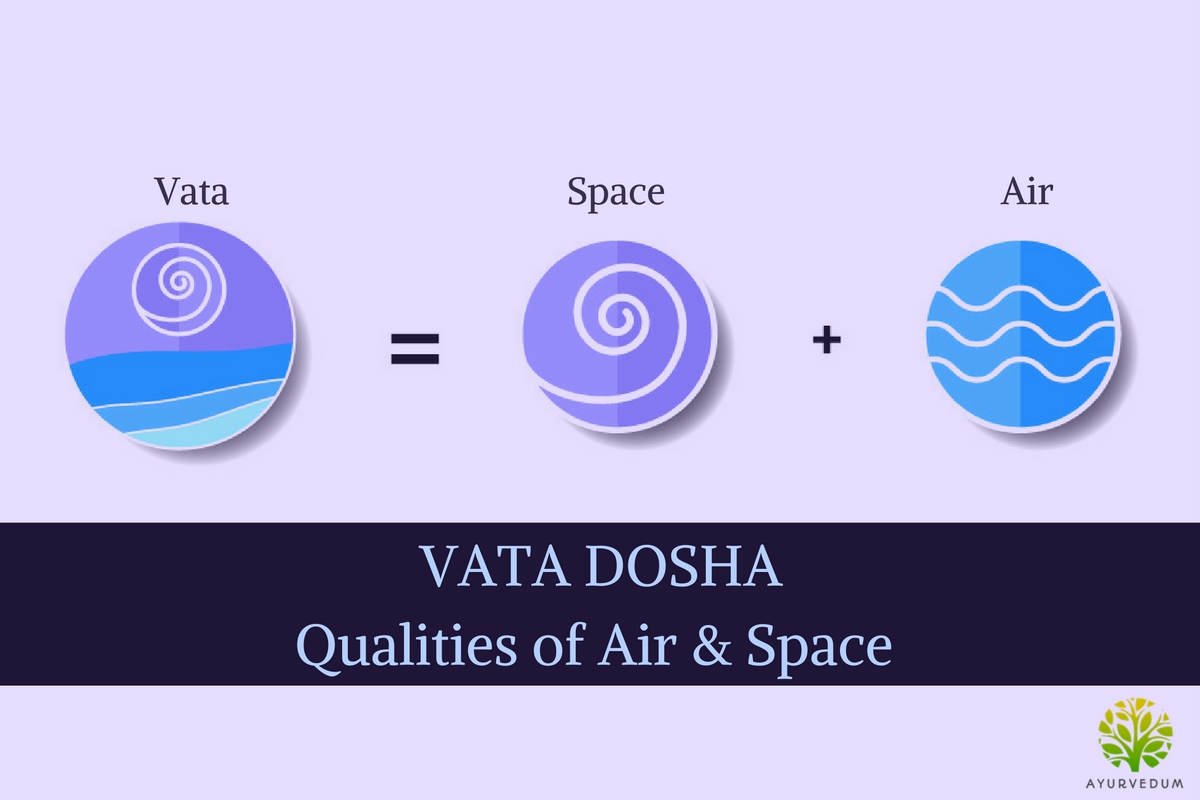

VATA and its 5 Subtypes
The Vata dosha consists of the 2 Panchamahabhutas(5 great elements) Akash(Ether) and Vayu(Air). Vata has Rajas qualities and controls many body functions such as your senses, intellect, digestion, excretion, touch.
This force mainly resides in your intestines, ears, bones and skin. An increase of Vata would cause conditions like: loss of body weight, darker than normal skin tone, desire for heat, tremors, gas, loss of strength, insomnia, malfunction of your sense organs, and hallucination. A decrease of Vata would cause conditions like: Motor sense malfunction, loss of speech, delirium, and other symptoms associated with an increase of Kapha dosha.
Vata also is represented in the lower third of the body and also reflects on the last third of our life. The times of Vata are 2am to 6am and 2pm to 6pm.
Vata Subtype 1) Prana Vayu- also known as the life force in your body, the Prana Vayu governs the functions of the sensory organs, it resides from the brain to the upper chest, this mother of the other Vatas, directs the other Vatas in the body. Having an inward motion from atmosphere to body, Prana Vayu also controls sneezing, spitting and belching.
Vata Subtype 2) Udana Vayu- being located in the chest, nose, and throat, and having an upward moving motion, speech, sneezing, and blowing or exhaling are examples of Udana Vayu. It is also an expression of our emotions through laughter or tears, the regulation of respiration, and affects our memory, strength, will power at a neurological level. Transcendental and psychic powers can be developed through yoga as the Udana Vayu ascends your Kundalini.
Vata Subtype 3) Samana Vayu- is an equalizing and balancing force between the upper and lower Vatas, which is located in the small intestines, and is the nervous force behind the digestive system. Being the predominant Vayu in the internal organs like the liver, spleen, pancreas, and stomach, Samana Vayu ignites the digestive fire, separates and absorbs digested food, works in the lungs for the absorption of air and has a contracting movement. Rumbling in the stomach is an example of Samana Vayu and an absence of this force can lead to conditions like Anorexia and Bulimia.
Vata Subtype 4) Vyana Vayu- is responsible for distribution and blood circulation. It moves outward in a circular, pulsating expanding motion. It is located mainly in the heart but also in the lungs, it regulates and maintains the rhythm of the heartbeat and other cardiac activity, circulation and voluntary nervous system. Imbalances of Vyana Vayu may show up as poor circulation, blocked arteries or even a heart attack.
Vata Subtype 5) Apana Vayu- has a downward away motion and governs secretions of the lower body and controls the immune system. Located in the pelvic area which is also the main seat of Vata, Apana Vayu is present during childbirth, bowel movements, urination and also the release of the egg or semen. Excessive amount of this force will cause diarrhea and extreme conditions may cause decay and death. Lack of Apana Vayu will cause constipation and impotence. 